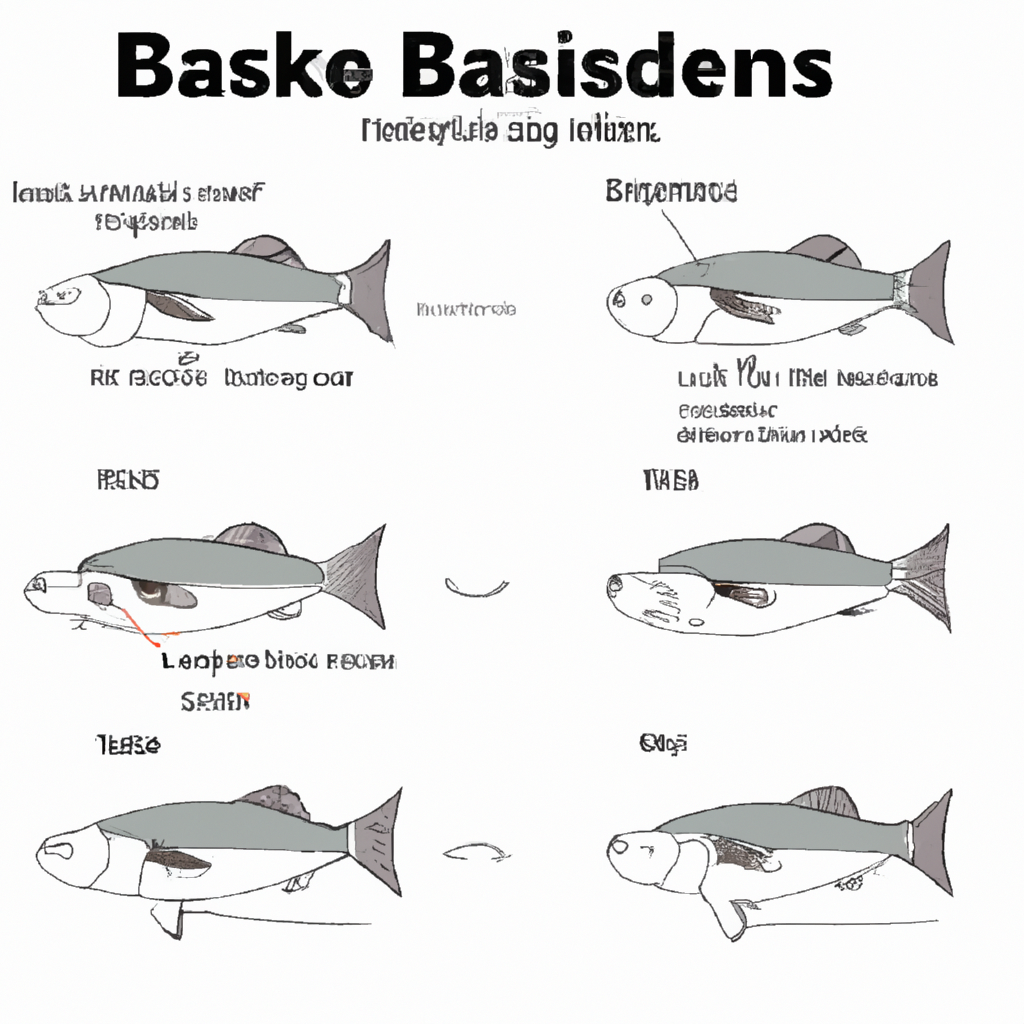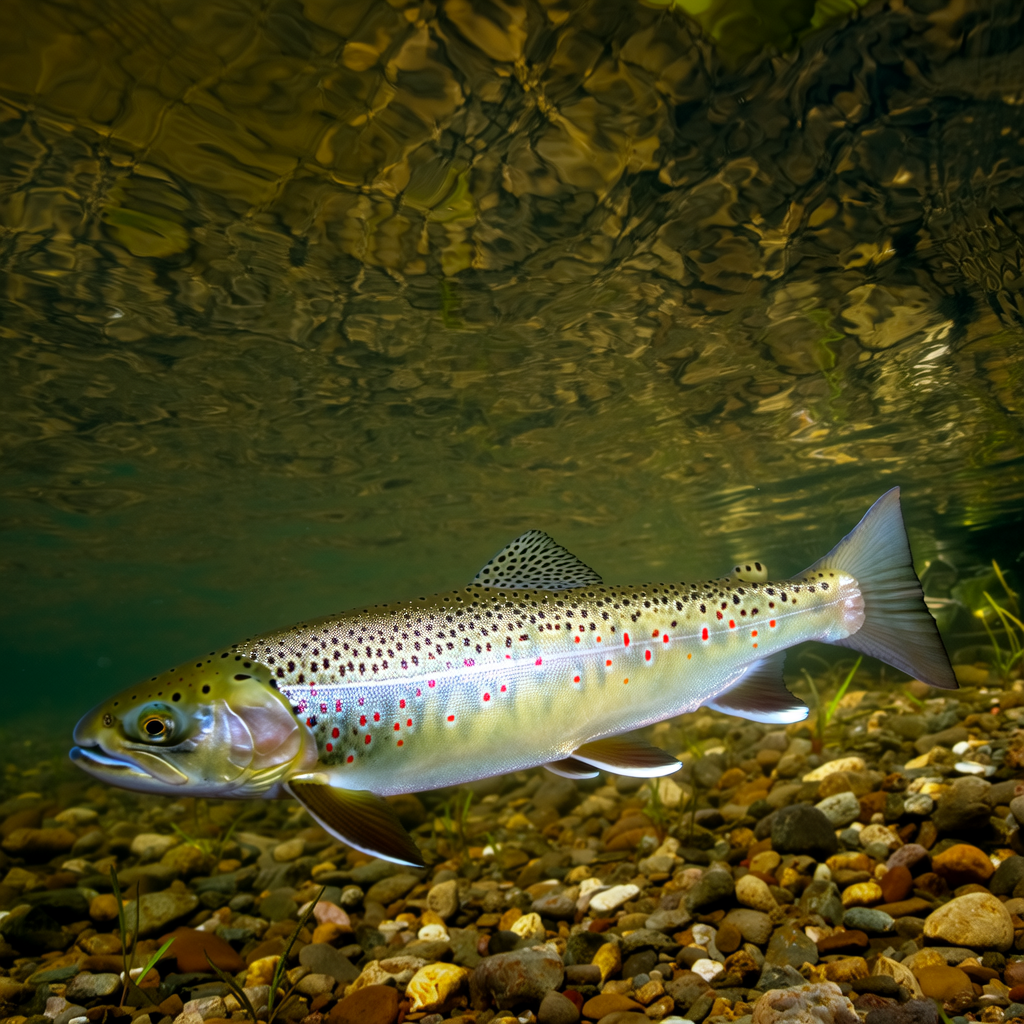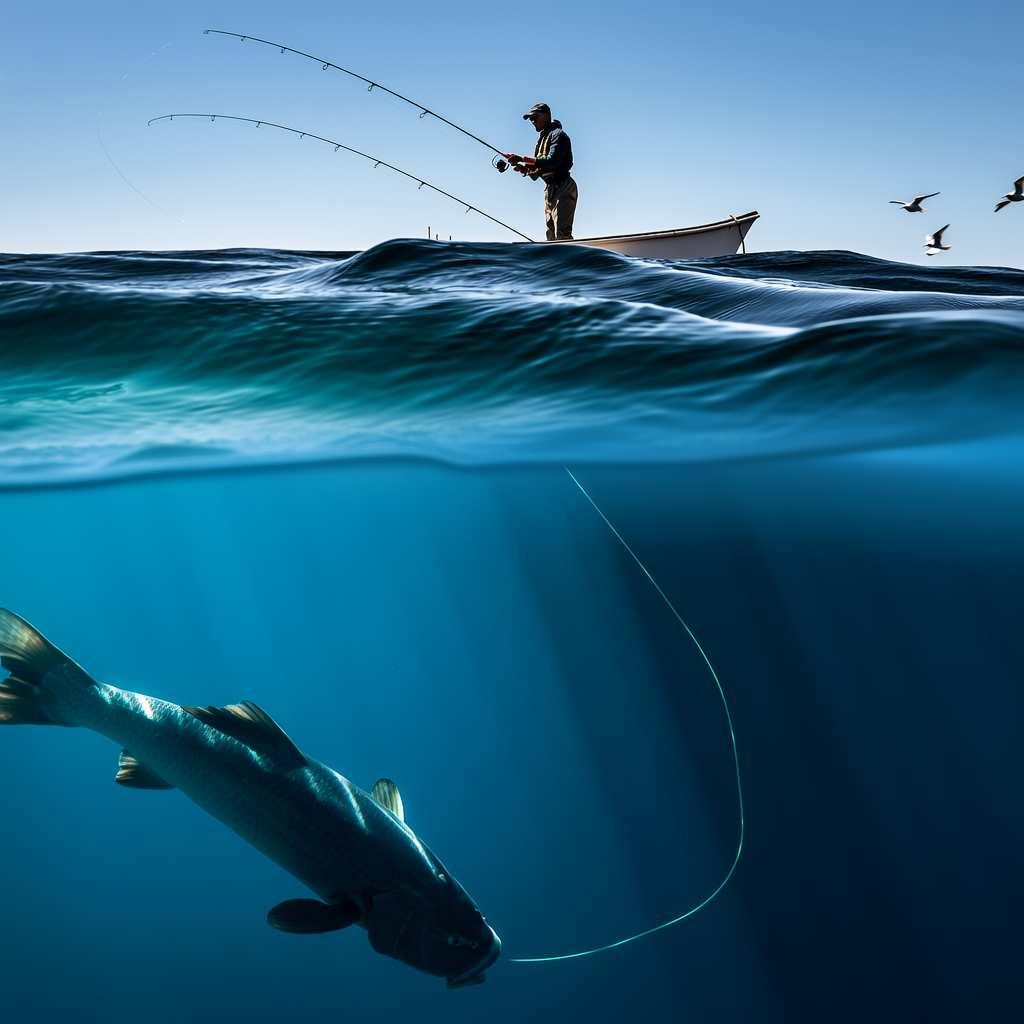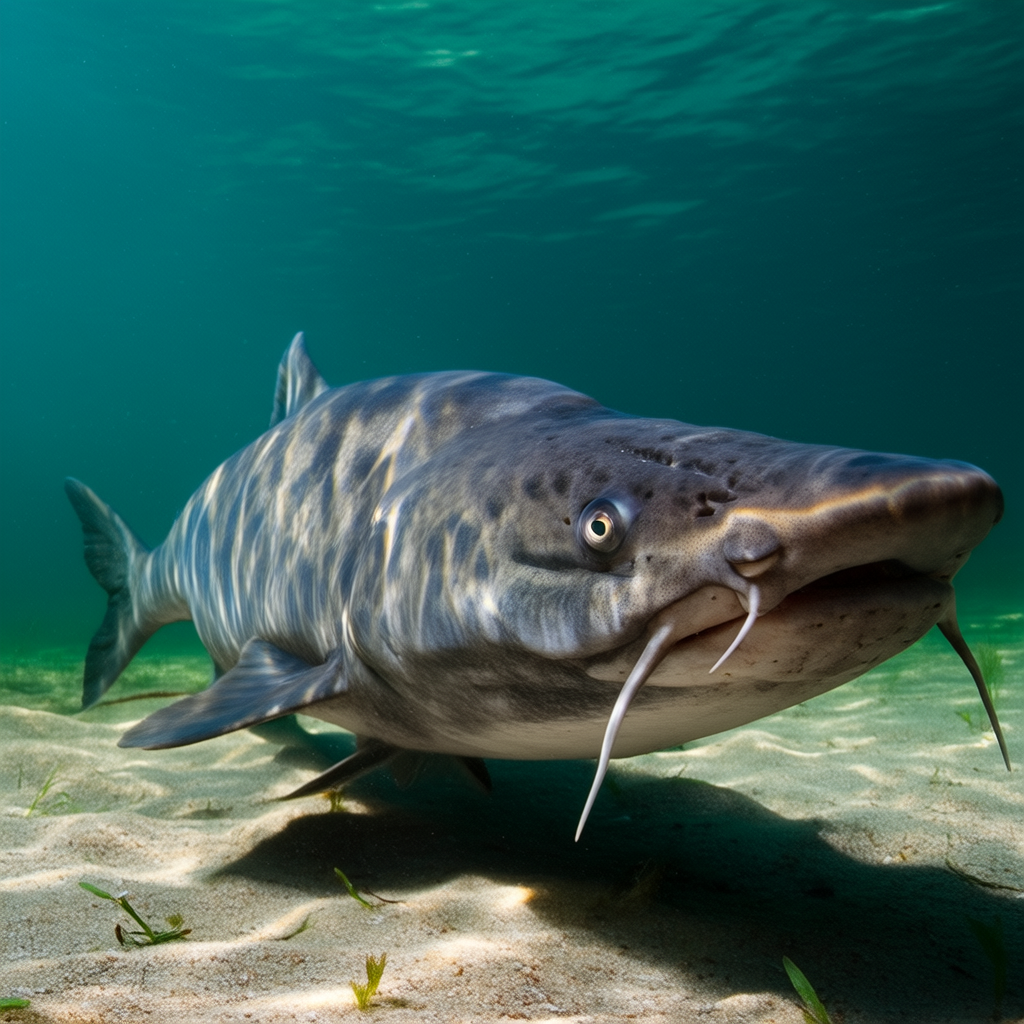The bass is a very popular fish, known for its unique taste and culinary versatility. Anglers love it as a sportfish that is difficult to catch and requires patience and skill. There are different types of bass, each with their own characteristics and habitats.
1. Largemouth Bass
Anglers prize the largemouth bass for its fighting ability and aggressive nature. They are found in North America from Canada to the Gulf of Mexico. They are most common in lakes and rivers that have slow-moving water.
Appearance
The back and sides of largemouth bass are dark green or olive, with a white stomach. The large, sharp teeth are arranged in a wide, distinctive mouth. The dorsal fin has two distinct sections: the front section is spiny, and the back section is soft. Some specimens can reach over 20 pounds.
Habitat
The largemouth bass likes warm, shallow water that is full of vegetation such as weeds and submerged logs. They can also be found in deeper water, around structures such as drop-offs and channels, or submerged trees. They can adapt to a variety of environments, and can be found anywhere from small ponds up to large rivers.
Bait and Lures
You can catch largemouth bass using a variety of lures and baits. These include live bait like shiners and minnows as well as artificial lures like spinnerbaits and topwater lures. They are known for their aggressive attacks and will often attack lures enthusiastically.
2. Smallmouth Bass
Smallmouth bass (Micropterus Dolomieu) are another popular species of bass that are highly regarded by anglers because of their fighting ability and acrobatic leaps. They are found all over North America, including the Great Lakes and the southern United States. They prefer rocky, clear water environments.
Appearance
Smallmouth bass are brown or bronze colored on the back and sides with a white belly. They have a more streamlined, elongated body than largemouth bass and their eyes are further back on the head. They have a small, protruding mouth. Most specimens weigh between 1-4 pounds.
Habitat
Smallmouth bass like clear, cool water that has a rocky or gravelly bed. They are found in rivers, lakes, and streams with a lot current. They also prefer rapids and eddies. They are less adaptable than largemouth bass to a variety environments, but still can be found in many settings.
Bait and Lures
You can catch smallmouth bass using a variety lures and baits. These include live baits like minnows or crayfish as well as artificial lures like crankbaits or jigs. They are known for being hard-fighting and will often break the water to try and shake the hook.
3. Striped Bass
The striped bass, Morone saxatilis, is a saltwater gamefish prized for its size and acrobatic fighting style. They are found all along the Atlantic coast, from Maine to Florida. They are usually found in brackish and saltwater environments.
Appearance
The back, sides and belly of the striped bass are dark green or silver. Their name comes from the distinctive horizontal stripes that run along their sides. They have a streamlined, forked tail with large, sharp teeth. Some specimens can weigh over 50 pounds.
Habitat
The striped bass is anadromous. This means that they spend their first years in freshwater, migrate to saltwater for maturation and then return to freshwater for spawning. They are found in estuaries and bays and nearshore waters where they feed on prey like menhaden, squid, and herring.
Bait and Lures
Striped bass are caught using a variety lures and baits. These include live baits like herring or mackerel as well as artificial lures like topwater plugs or jigs. They are known for their powerful strikes and their ability strip line from a reel at incredible speeds.
4. Black Bass
The black bass is a lesser known species of bass found in the southeast United States. They are often mistaken for largemouth bass because of their similar appearance and habitat preference, but they have some distinguishing features.
Appearance
Black bass has a dark gray, black or grayish-black back and sides with a white, or light colored belly. They have a similar shape to largemouth basses, but a smaller mouth. They also appear less stocky. They have two dorsal rays, the front section of which is spiny and the rear section soft.
Habitat
Black bass like warm, shallow water that has lots of structure and vegetation. They prefer lakes and rivers that are slow-moving, still, or have weed beds and submerged logs. They are less adaptable to different environments than largemouth bass but can still be found there.
Bait and Lures
Black bass can also be caught with a variety lures and baits. These include live baits like shiners or worms as well as artificial lures like spinnerbaits or plastic worms. They are known for their aggressive attacks and will often strike lures with great power.
5. Peacock Bass
The peacock bass is a species of Cichla. The Amazon basin in South America is home to a large and colorful species of bass. Anglers prize them for their fighting abilities and striking visual appearance.
Appearance
Peacock bass are a beautiful array of colors including green, yellow, and blue. They have an elongated, large body with a protruding jawline. Their fins have a unique, eye-catching pattern, and their gills are often a bright, red color.
Habitat
The Amazon basin is home to the peacock bass. They prefer clear, slow-moving water and areas with lots of structure and cover, such as submerged vegetation and trees. They can also be found in fast-moving rivers, where they are found in deeper holes and eddies.
Bait and Lures
Peacock bass are caught using a variety lures and baits. These include live baits like minnows or shiners as well as artificial lures like topwater lures or swimbaits. They are known for being hard-fighting and having a tendency to make explosive attacks.
6. Rock Bass
The rock bass is a small, but fierce species of bass found in the eastern United States and Canada. Anglers often overlook them in favor of bigger species. However, they are fun to catch and tasty.
Appearance
The back and sides of rock bass are dark brown or green, with a white belly or yellow. They have a small, protruding mouth and a lower jawline. Their dorsal ray is spiny and has a distinctive orange or red hue. Most specimens weigh between 0.5-1 pounds.
Habitat
The rock bass is often found in rivers and streams with rocky bottoms, and plenty of cover like submerged logs or boulders. They can also be found in lakes and ponds that are clear and cold, with similar habitat characteristics. They can adapt to a variety of environments, and can be found anywhere from small creeks to large rivers.
Bait and Lures
Rock bass can also be caught with a variety artificial lures like jigs or spinners. Live baits include worms and minnows. They are known for their aggressive attacks and will often strike lures several times in rapid succession.
7. Guadalupe Bass
The Guadalupe Bass (Micropterus treculii), a small, but hardy species of bass, is found in south-central United States. They are often seen as a symbol for the Texas Hill Country where they are the official fish.
Appearance
The back and sides of the Guadalupe Bass are dark green or brown, with a lighter colored belly. They have a small, protruding mouth and a black stripe running along their body. Most specimens weigh between 0.5-2 pounds.
Habitat
Guadalupe Bass prefers fast-moving, clear streams and rivers that have rocky substrates. They also like a lot of cover, such as submerged rocks and logs. They can also be found in small, cool streams in the mountains. They are highly adaptive and can be found in many different environments.
Bait and Lures
Guadalupe Bass can be caught with a variety lures and baits. These include live baits like worms or small minnows as well as artificial lures like small jigs or spinners. They are known for being aggressive and hitting lures with enthusiasm.
8. Spotted Bass
The spotted bass is a lesser known species of bass that is found in the Southeast United States. Due to their similarity in appearance, they are often mistaken for largemouth bass. However, they have some distinct features.
Appearance
The back and sides of the spotted bass are dark green or brown, with a lighter colored belly. They have a smaller, more streamlined mouth and body than largemouth basses. Their jawline is also straighter. The dorsal fin of the bass is divided into two sections. Both sections are spiny. Most specimens weigh between 1-3 pounds. They are smaller than the largemouth bass.
Habitat
The spotted bass prefers clear, cool waters with rocky substrates. They also like lots of structure in the water such as submerged boulders and logs. They are found in rivers, streams and lakes with similar habitats. They are less adaptable to different environments than largemouth bass but can still be found.
Bait and Lures
You can catch spotted bass using a variety lures and baits. These include live baits like minnows or nightcrawlers as well as artificial lures like spinnerbaits and crankbaits. They are known for being aggressive and hitting lures with a lot of force.
9. Redeye Bass
The redeye (Micropteruscoosae), a small, colorful species of bass, is found in the Southeast United States. Anglers often overlook them in favor of bigger species, but they are fun to catch and quite beautiful.
Appearance
Redeye bass has a dark olive-brown back and sides with a lighter colored belly. Their fins are often red or orange and they have a small, protruding mouth. Most specimens weigh between 0.5 and 1.5 pounds.
Habitat
Redeye bass like clear, cool waters with rocky substrates. They also like lots of cover, such as submerged rocks and logs. They are usually found in rivers and streams with strong currents. However, they can also be found in small streams in the mountains. They are highly adaptive and can be found in many different environments.
Bait and Lures
Redeye bass are caught using a variety lures and baits. These include live baits like crickets and worms as well as artificial lures like small jigs or spinners. They are known for being aggressive and will often strike lures with great force.
10. White Bass
The white bass, Morone chrysops, is a popular gamefish found in North America. Anglers are often able to catch them in large numbers when they are on their spawning run.
Appearance
The white bass has a silvery body and a dark green or blue back. They have a forked-tail, a small, sharp mouth, and a sharp tooth. Most specimens weigh between 0.5-3 lbs.
Habitat
White bass prefer cool, clear water with moderate or strong currents. They are found in large reservoirs and rivers, where they form large groups during their annual spawning run. They are less tolerant of a wide range environments than other bass species but can still be found.
Bait and Lures
You can catch white bass using a variety lures and baits. These include live baits like minnows or shad as well as artificial lures like crankbaits or jigs. They are known for the tendency to school and their hard-hitting attacks.
11. Hybrid Striped bass
The hybrid striped fish (MoronesaxatilisxM.chrysops), a cross between striped and white bass, is often raised by hatcheries to be stocked in reservoirs and inland lakes.
Appearance
The hybrid striped bass has a silvery body and a dark green or blue back. They have a forked-tail, a small, sharp mouth and sharp teeth. They have horizontal stripes on their body, like striped bass. However, they are smaller and have a more streamlined physique.
Habitat
Hybrid striped basses can be found in many different environments, from large reservoirs to smaller ponds. They are often stocked into lakes and ponds to be used for recreational fishing. They can adapt to a variety of water conditions.
Bait and Lures
Hybrid striped basses can be caught with a variety lures and baits. These include live baits like shads and minnows as well as artificial lures like crankbaits and Jigs. They are known for their powerful strikes and their tendency school together.
12. Shoal Bass
The shoal-bass (Micropterus catapultae) is one of the bass species found in the southeast United States. Anglers prize this species because it is relatively rare.
Appearance
The back and sides of shoal bass are dark green or brown, while the belly is light colored. They have a wide, distinctive mouth and a large jawline with sharp teeth. The dorsal fin of the fish is divided into two sections: the front section is spiny, and the back section is soft. Most specimens weigh between 1-3 pounds. They are smaller than the largemouth bass.
Habitat
Shoal bass like clear, fast-moving waters with rock or gravel as substrates. They also like lots of cover, such as submerged rocks and logs. They are more likely to be found in rivers or streams with rapids and strong currents.
Bait and Lures
Shoal bass are caught with a variety lures and baits. These include live baits like crawfish or small minnows as well as artificial lures like topwater plugs and Jigs. They are known for their hard-hitting attacks and their tendency to run long distances after being hooked.
13. Bartram’s bass
Bartram’s Bass (Micropterus warrenensis) are a rare species that can only be found in a few rivers and streams in the southeast United States. They are often regarded by many as a symbol for the Gulf Coastal Plain where they are found.
Appearance
Bartram’s Bass have a dark brown or green back, with a lighter colored belly. They have a wide, distinctive mouth with large teeth along the jawline. The dorsal fin of the fish is divided into two sections: the front section is spiny, and the back section is soft. Most specimens weigh between 0.5 and 1.5 pounds. They are smaller than the largemouth bass.
Habitat
Bartram’s Bass prefers clear, warm water that has a sand or gravel substratum and plenty of cover like submerged rocks and logs. They are found in rivers and streams with moderate to slow currents and are well adapted to the habitat.




